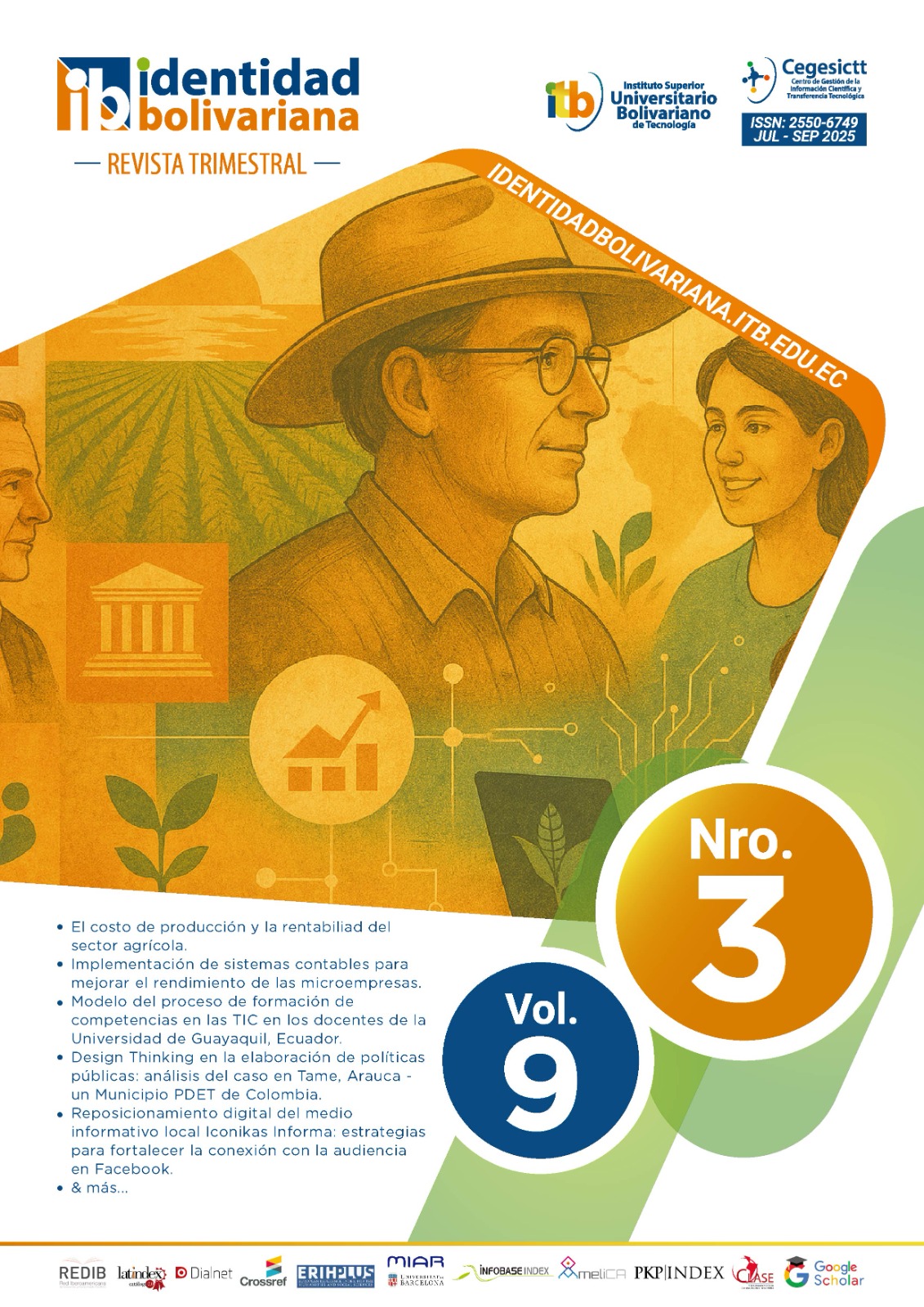Implementation of the flipped class as a pedagogical model for learning factoring in high school students
Main Article Content
Abstract
The main objective of this research was to design and implement different strategies related to the Flipped Classroom as a pedagogical model to strengthen topics related to mathematics for first-year high school students in an educational institution located in Ecuador. Within the work context, it was found that the students belong to a medium-low economic level, which allows them access to use information and communication technologies (ICT). The research approach is experimental, specifically quasi-experimental, with two stages: pretest and posttest to measure the effectiveness of the sessions worked on the main topics of factorization with students applying the Flipped Classroom methodology. Two groups were worked with: a control group (38 students) and an experimental group (38 students). The main findings show a significant improvement when applying tools related to the Flipped Classroom, linking it to factorization topics, showing an increase in content mastery. The results demonstrate the general hypothesis with a significance of ρ = 0.00 < 0.05, which indicates that the implementation of the Flipped Classroom as a pedagogical model strengthens students’ factorization skills.
Article Details
Section
How to Cite
References
Cabrera Jaime M., Medina Ferley., Sánchez Irlesa I. y Arias Juan M. El grado de manejo de las TIC para el aprendizaje de la física en ingeniería. Revista Espacios. Vol. 38, Año 2017, Número 45, Pág. 6. Recuperado de: http://revistaespacios.com/a17v38n45/17384508.html.
Caiza Robalino, P. (2025). Aplicación de interfaces educativas mediadas por TIC: impacto en la efectividad del aprendizaje del sistema de ecuaciones lineales (Master’s thesis, Riobamba: Universidad Nacional de Chimborazo).
Cordones, V. F. G., Vásconez, S. M. A., Tinajero, P. P. P., Solís, D. E., & Mites, S. S. P. (2024). Educación Pedagógica-Digital: Aula Virtual y Herramientas Tecnológicas Orientado al Desarrollo Cognitivo y el Aprendizaje Significativo de la Matemática. Ciencia Latina Revista Científica Multidisciplinar, 8(4), 8090-8119.
Duque, M. V., & Acero, E. C. (2022). Herramientas educativas como apoyo en la enseñanza. Mendive. Revista De Educación, 20(4), 1099–1108. Recuperado a partir de https://mendive.upr.edu.cu/index.php/MendiveUPR/article/view/2955
Muñoz, M. L. D., & Moreno, J. A. V. (2023). Aula invertida inteligente como estrategia didáctica emergente para la enseñanza aprendizaje de matemática. Revista Cubana de Educación Superior, 42(1 ene-abr), 243-259.
Pita, J. K. Y., & Romero, I. R. C. (2025). La Realidad Virtual como herramienta trasformadora en la enseñanza de Matemáticas en el Nivel Básica Superior. Revista Veritas de Difusão Científica, 6(1), 127-149.
Pozo Velasco, A. J., Ramírez Gutiérrez, C. V., & Martínez Pérez, O. (2025). Uso de Metodologías Activas y Herramientas de Tecnología de la Información y Comunicación (TIC) en la Educación. MQRInvestigar, 9(1).
Quilia Valerio, J. V. M., Alfaro Mendoza, J. A., & Riveros Avila, M. A. (2023). Impacto de las TIC en educación básica en América Latina. Mendive. Revista De Educación, 21(3), e3291. Recuperado a partir de https://mendive.upr.edu.cu/index.php/MendiveUPR/article/view/3291
Tipán, E. A. C., Suarez, M. F. N., Macías, G. L. F., & Quistial, S. B. L. (2021). Metodología Flipped Classroom para el fortalecimiento del proceso de enseñanza-aprendizaje en la asignatura de matemática. Serie Científica de la Universidad de las Ciencias Informáticas, 14(9), 106-120. https://dialnet.unirioja.es/servlet/articulo?codigo=8590646
Villalobos, M. E. A. E. C. (2021). El aula invertida en la clase de matemática. Ciencia Latina Revista Científica Multidisciplinar, 5(5), 7750-7766. https://ciencialatina.org/index.php/cienciala/article/view/873

